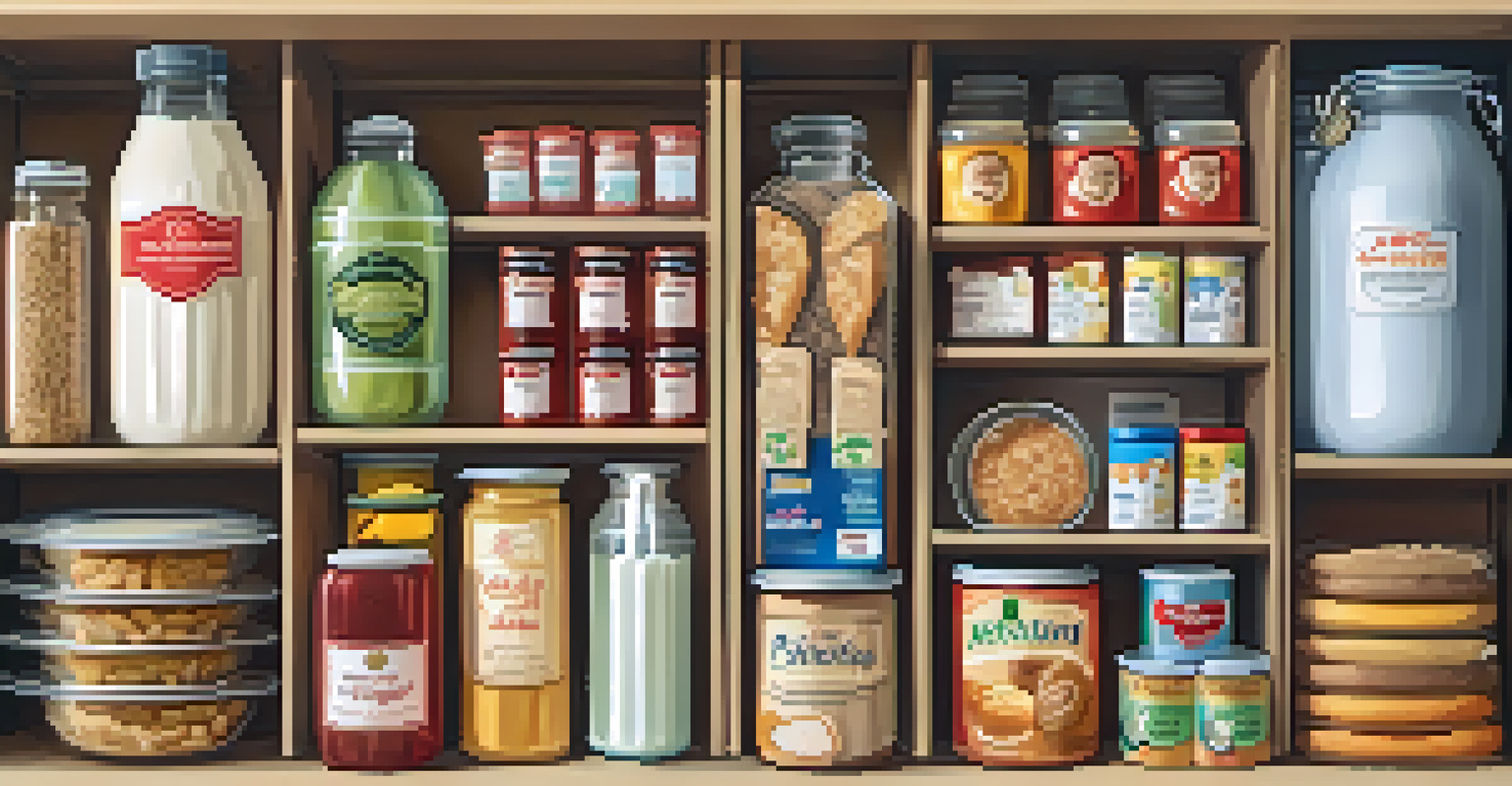The Ultimate Guide to Organizing Your Pantry Efficiently

Why an Organized Pantry Makes Cooking Easier
An organized pantry is like a well-tuned orchestra; everything plays in harmony. When your ingredients are easy to find, cooking becomes a breeze, saving you time and reducing stress. Imagine reaching for flour without having to dig through a mountain of spices and snacks.
A place for everything, and everything in its place.
Additionally, a tidy pantry helps prevent food waste. By knowing exactly what you have, you can use items before they expire and avoid duplicate purchases. This not only saves money but also ensures you’re making the most of your grocery haul.
Plus, a well-organized pantry can inspire creativity in the kitchen. With everything neatly arranged, you may discover new ingredients that encourage you to try new recipes, transforming meal prep into an exciting adventure.
Assessing Your Current Pantry Situation
Before diving into organization, take a step back and assess your current pantry setup. Open the doors and take stock of what you have; you might be surprised by the hidden gems lurking at the back. This initial assessment is crucial for understanding what you need to keep, toss, or donate.

While going through your items, check expiration dates and make a note of what is almost empty or expired. This will give you a clear picture of what you actually use and what is just taking up space. It's like a mini inventory that sets the stage for a fresh start.
Organized Pantry Reduces Stress
A well-organized pantry makes finding ingredients easy, which streamlines cooking and reduces anxiety.
Lastly, think about how often you cook and the types of meals you prepare. Tailoring your pantry organization to fit your cooking habits can make it even more efficient. For instance, if you often bake, keep baking ingredients front and center.
Decluttering: The First Step to a Functional Pantry
Decluttering is the cornerstone of any organization project, and your pantry is no exception. Begin by removing everything from the shelves—yes, everything! This allows you to see the space you have and assess what items are truly necessary.
The secret of getting ahead is getting started.
As you pull items out, sort them into categories: keep, donate, and toss. Be honest with yourself—if you haven’t used an ingredient in over a year, it’s time to let it go. This process can feel liberating, almost like a fresh start for your kitchen.
Once you’ve sorted through everything, take a moment to clean the shelves. Wipe down surfaces and make sure everything is free from spills or crumbs. A clean slate sets the stage for a beautifully organized pantry.
Choosing the Right Containers for Storage
When organizing your pantry, the right containers can make all the difference. Opt for clear, stackable bins to hold dry goods like pasta, rice, and snacks. These containers not only keep items fresh but also make it easy to see what you have at a glance.
Labeling is another essential step. Use a label maker or simple adhesive labels to identify contents and expiration dates. This small effort can save you time and confusion when looking for specific ingredients, especially in a busy pantry.
Declutter for Pantry Efficiency
Removing unnecessary items and cleaning shelves is essential for creating a functional and organized pantry.
Don’t forget about utilizing vertical space! Consider tiered shelves or risers for smaller items like spices or canned goods. By maximizing your vertical space, you can create a more efficient pantry that feels spacious and organized.
Strategic Organization: Grouping Similar Items
Organizing your pantry by grouping similar items together can significantly improve functionality. Start by categorizing items into groups such as baking supplies, canned goods, snacks, and grains. This way, you’ll know exactly where to look when you need something.
Within each category, consider arranging items by size or frequency of use. Place frequently used ingredients at eye level for easy access, while less-used items can go on higher or lower shelves. This simple strategy can save you time and effort during meal prep.
Don’t forget to leave some open space for flexibility. Life is unpredictable; you may bring home new items or find a great deal on something you don’t usually buy. Having a little wiggle room helps keep your pantry organized without feeling cramped.
Creating a Pantry Inventory System
An inventory system can be a game-changer for maintaining your organized pantry. Start by making a simple list of all items in your pantry, including quantities and expiration dates. This list can help you keep track of what you have and what needs replenishing.
Consider using an app or spreadsheet for a digital approach. Many apps allow you to scan barcodes for quick entry, making it easier to update as you use items. This tech-savvy solution can streamline your shopping trips and meal planning.
Maintain Your Pantry System
Regular check-ins and updates to your pantry inventory ensure it remains organized and meets your cooking needs.
Regularly update your inventory, especially before grocery shopping. By knowing what you have on hand, you can make informed decisions and avoid unnecessary purchases—saving both time and money in the long run.
Maintaining Your Organized Pantry Over Time
Once you’ve achieved pantry perfection, the key is maintenance. Schedule regular check-ins—perhaps once a month—to ensure everything stays in its designated spot. During these check-ins, you can refresh labels, reorganize as needed, and remove expired items.
Involve your family in the process! Teach them where items are located and encourage them to put things back in their rightful place. This not only makes maintenance easier but also fosters a sense of teamwork in the kitchen.

Lastly, don’t be afraid to adjust your organization as your cooking habits change. If you start baking more, create a dedicated baking section. Flexibility is vital for keeping your pantry functional and supportive of your culinary adventures.